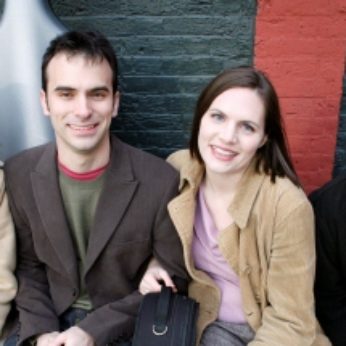Composer: Antonin Dvořák (b. 1841 - d. 1904)
Performance date: 30/06/2013
Venue: St. Brendan’s Church
Composition Year: 1895
Duration: 00:33:57
Recording Engineer: Damian Chennells, RTÉ lyric fm
Instrumentation: 2vn, va, vc
Instrumentation Category:String Quartet
Artists:
Jupiter String Quartet (Nelson Lee, Meg Freivogel McDonough [violins], Liz Freivogel [viola], Dan McDonough [cello]) -
[quartet]

Dvorák
spent some years in
as head of the new National Conservatory in
1895. He brought back with him the first
111 bars of a new Quartet which he had started that March. Before returning to it he wrote a new quartet
in G major Op.106. Finally he got around to completing the A flat Quartet,
finishing the work on December 9th, 1895. Because of the delay in completing it, the
Quartet appeared as Op.105 even though it was to prove to be his last work in
quartet form. It was first performed in
on October 20th 1896 by the Bohemian Quartet.
The
Quartet opens with a grave prelude as the cello announces a sombre phrase which
is then repeated by the other instruments, interrupted by rather dissonant
chords. Then suddenly the first violin
launches a lively, trilling theme. This
sets the mood for a sparking, wide-ranging movement full of fascinating
moments. The slow opening is recalled
occasionally and the mood swings around quite rapidly with fast and slow
sequences, as in the Czech folk dance the furiant.
At the end, the slow opening theme of the movement is heard once more before
the music ends in high spirits. The
scherzo comes second and is one of Dvorák’s finest. It definitely reflects the
style of a furiant, mixing double and
triple rhythms. The central trio is a charmingly romantic song before the rapid
opening sequence is given a brief reprise.
The
slow movement is full of tender warmth.
It opens with a soaring, rapturous song, soon richly elaborated upon,
until it reaches a full stop and an unexpected moment of silence. The cello
then launches a pulsating beat as the upper strings move through some richly
chromatic sequences. The song returns in
a faster tempo with pizzicato accompaniment on viola and cello, again the full
stop is reached but this time the music fades away gradually into silence. The
finale opens with mutterings on the cello taken over by the upper strings who
transform the notes into a busy tremolo theme. There is splendid interplay
between these simple ideas as the movement develops into a broad-ranging
demonstration of Dvorák’s quartet skills as the music dances exuberantly away,
culminating in a wild and witty Bohemian coda.
Copyright © 2025 West Cork Music. All rights reserved.
Designed and developed by Matrix Internet